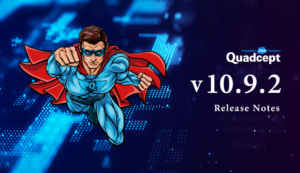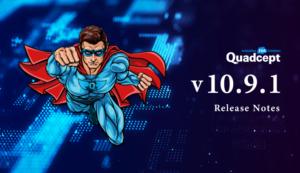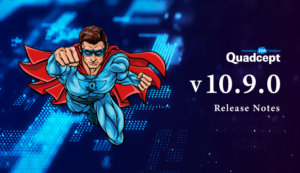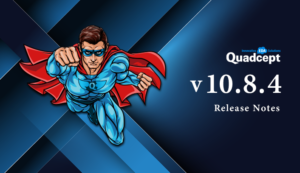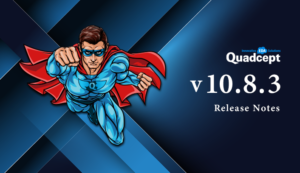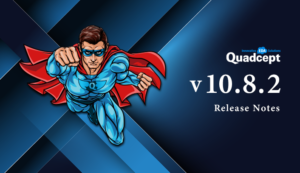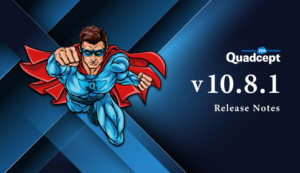Separated from Quadcept database, project data is now file-based
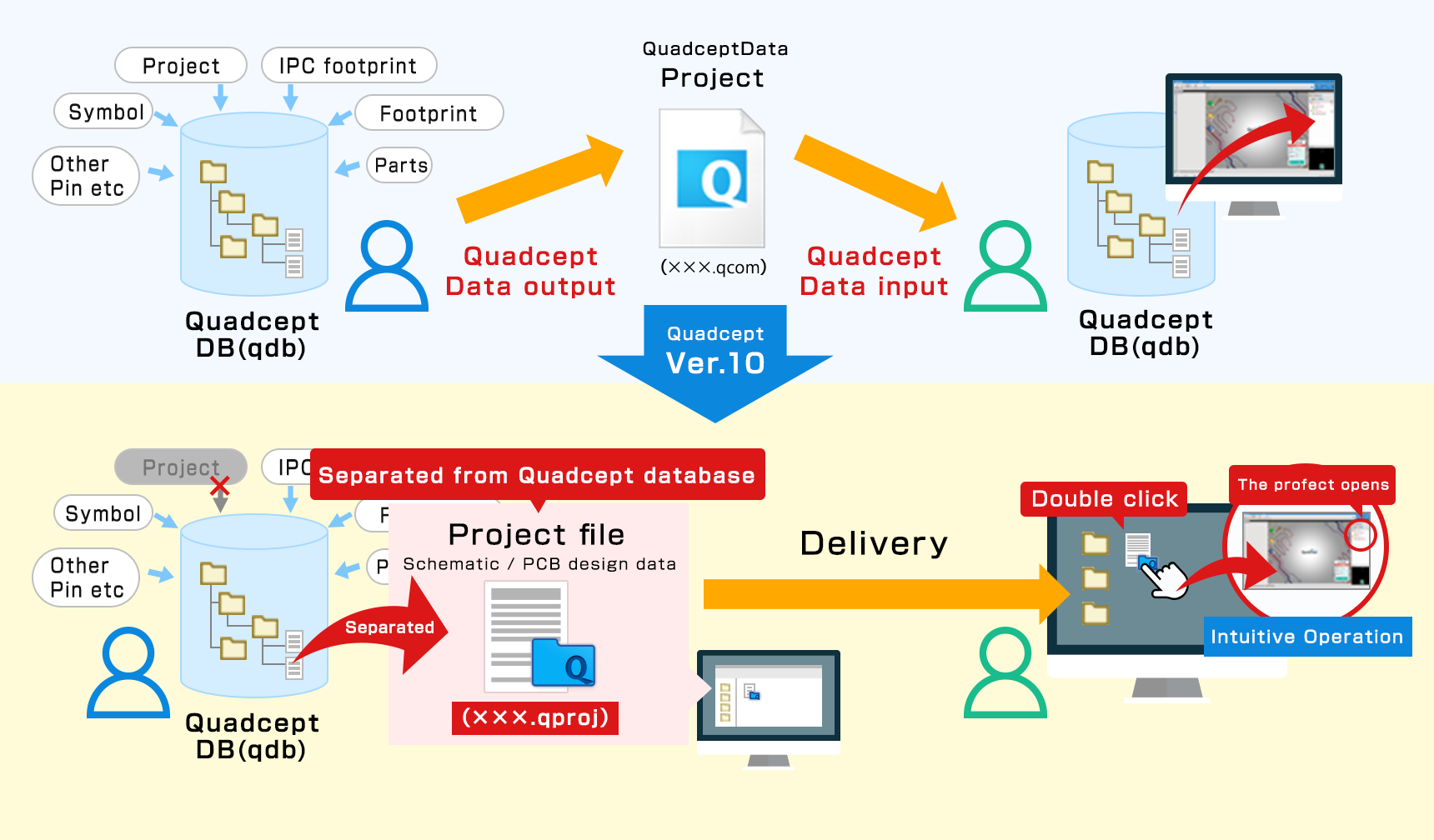
Outline
Up until now, project data has been stored in a database (qdb) along with other objects. This structure enables you to manage all the data such as projects, components, symbols and footprints together in one database, but there have also been some challenges where the database size becomes larger as the number of projects increases and it needs some steps to share project data.
From Ver.10, project data will be separated from the database and be file-based to resolve those challenges. This will allow you to save your project files at any Windows directories, and you will be able to manage your project files more intuitively. This will also greatly enhance the affinity with various cloud storage services.
Moreover, Quadcept will link with a cloud-based library management system, Cloud Component Manager (CCM) and a cloud-based design and development information management service, Balus Mega to make it easier to manage your team and design projects.
Advantages of File-based Structure
- More intuitive project management and sharing
- Improved performance when saving and reading projects
- Less database size (qdb)
- Enhanced affinity with various cloud storage services
- Launch application by double-clicking project files
Component Libraries to Be Included in Project Files
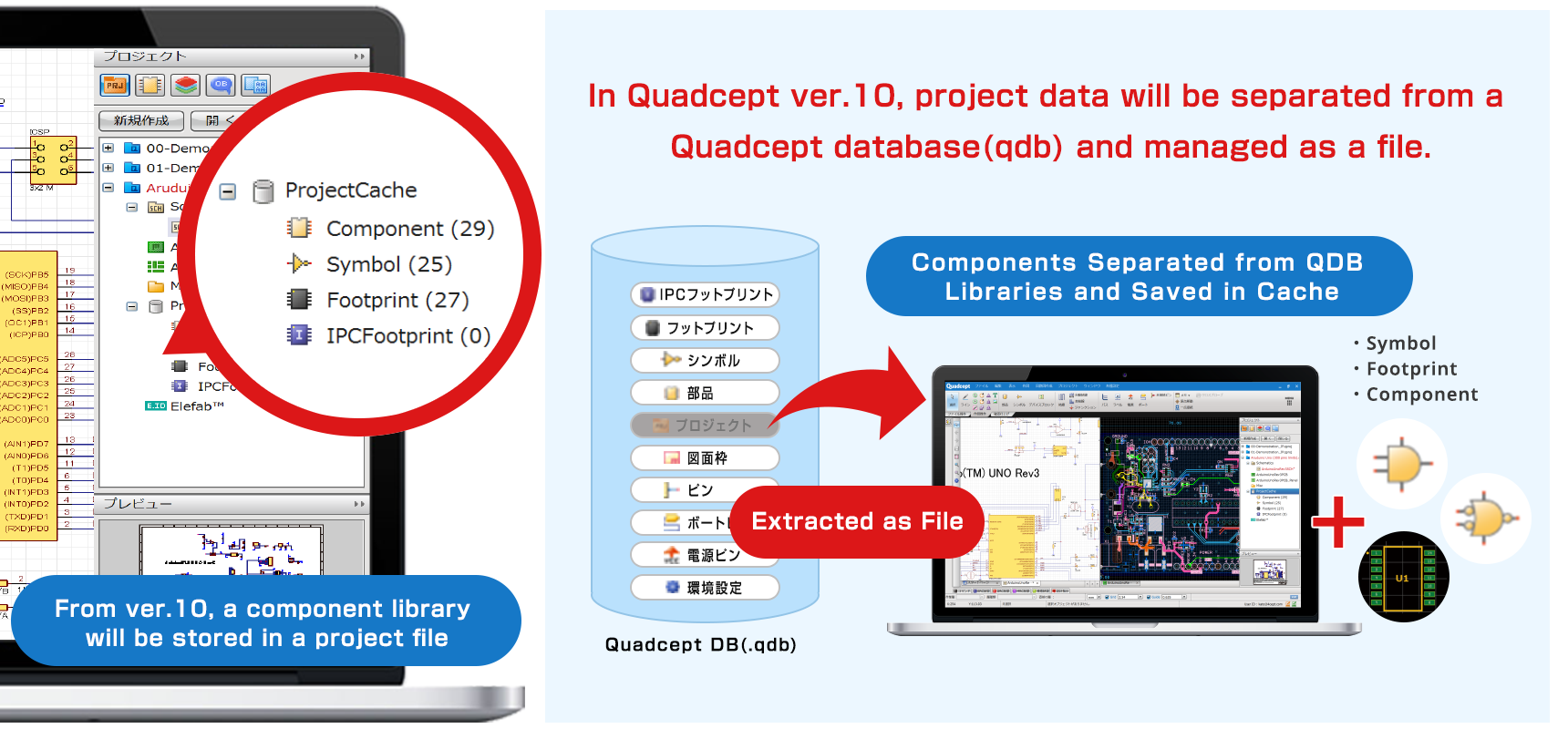
Outline
Along with this update, a Quadcept project file will store caches for components, symbols and footprints used in your design. A component library(Project Cache) will be built for each project file.
With this, components used in your design will not be affected by master or imported libraries. This will help you to prevent unintended component data change when you place, update and replace components.
Points of Project Cache
- Components in a project will be more secured.
- Components will be placeable from data cache.
- Data caching can be toggled between ON or OFF.
File Locking – Available for Objects Including Project, Component, Symbol and Footprint
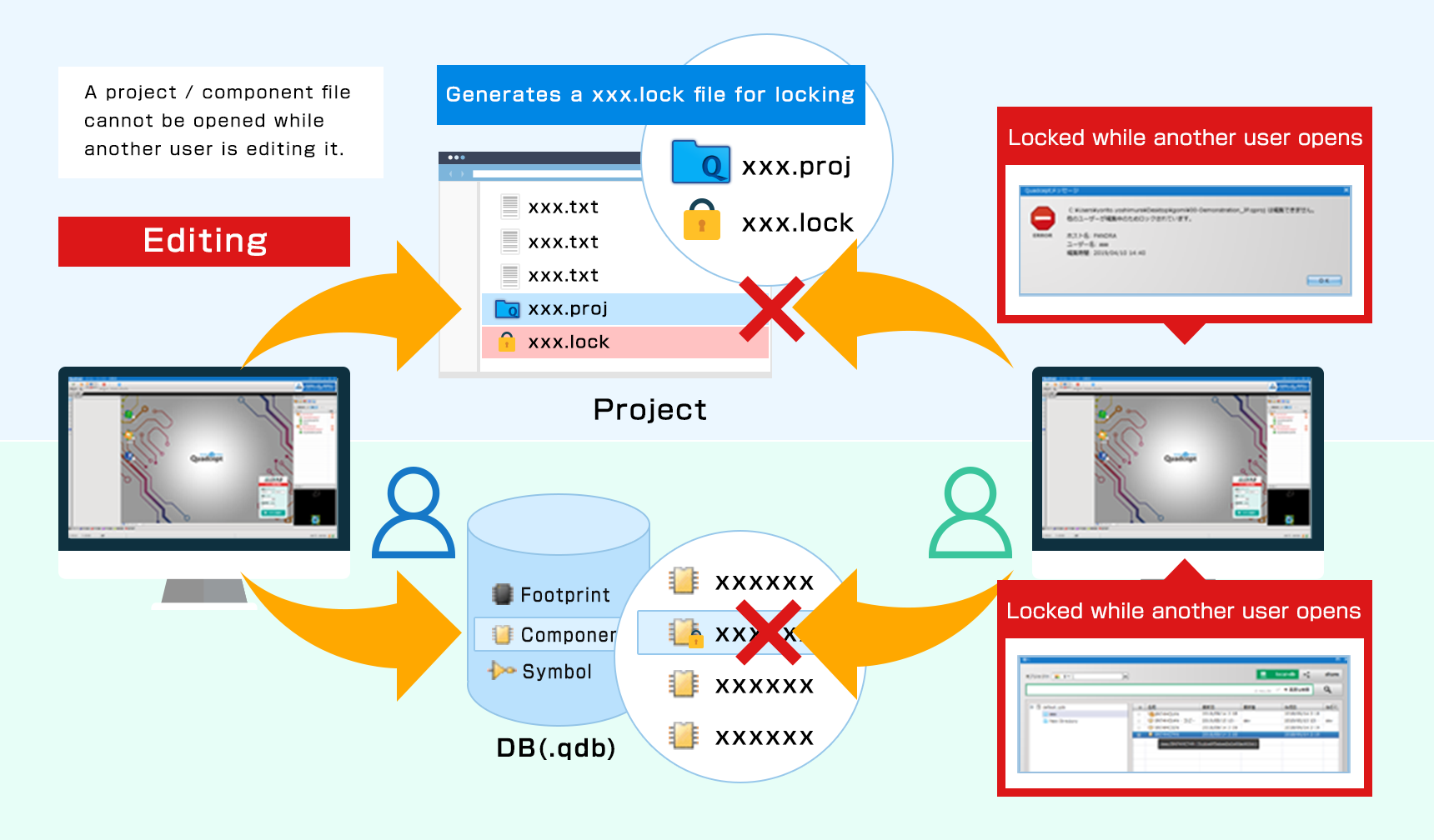
The upcoming new version of Quadcept will provide a file locking function for each object including a project, component, symbol and footprint. This helps you view which object is currently being edited and avoid merge conflicts.
What is file locking?
File locking is a data management feature that restricts access to a file by allowing only one user or process to access it while it is being edited. When another user attempts to open the file, an error message will appear stating that the file is locked.
* You can place an object on your design even when it is locked.
A DB for Shared Libraries Will Be Available in the Upcoming New Version
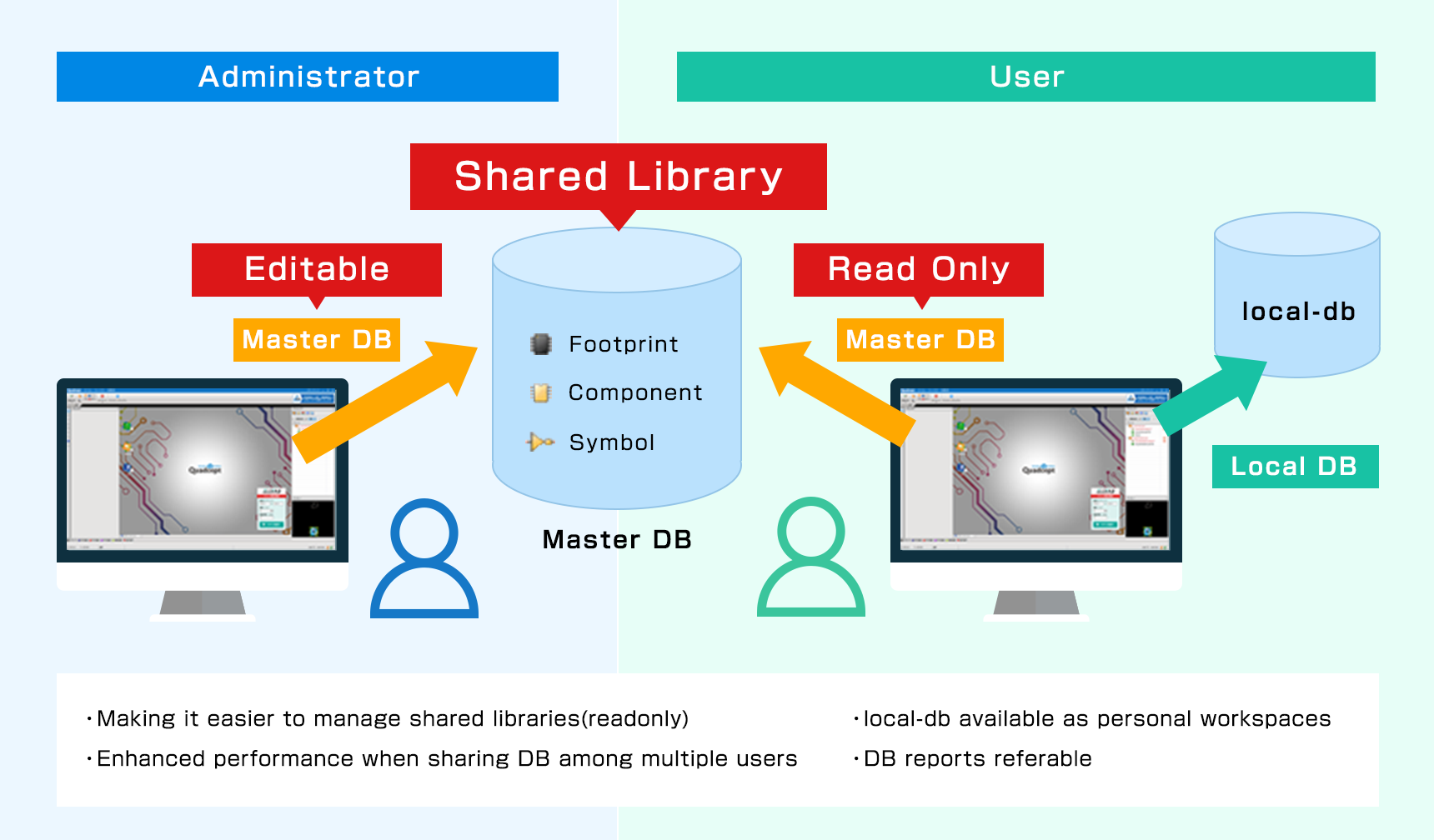
About “local-db” and “master-db”
In Quadcept, libraries can be shared among multiple users by storing a Quadcept database(qdb) in a shared space such as a company server to be referred to by all the users. However, since there is only one database available in the version 9 or earlier, there have been some challenges such as not being able to have personal workspaces, accidentally editing managed parts, and leading to poor performance when access to a database is increased.
The upcoming new version will provide a database called “master-db” for sharing objects in addition to the current “local-db”. This will allow you to set up two Quadcept databases and make it easier to share libraries among multiple users. For differences between the databases, please see the description below.
local-db
This is a personal database that allows you to freely add/delete/edit libraries.
* This is called “local”, but it can be moved to any location to share objects as it used to be.
master-db
This is a Read-Only database where only an administrator can add/delete/edit libraries. Users except an administrator can only refer to or place the libraries.
Thank you.

